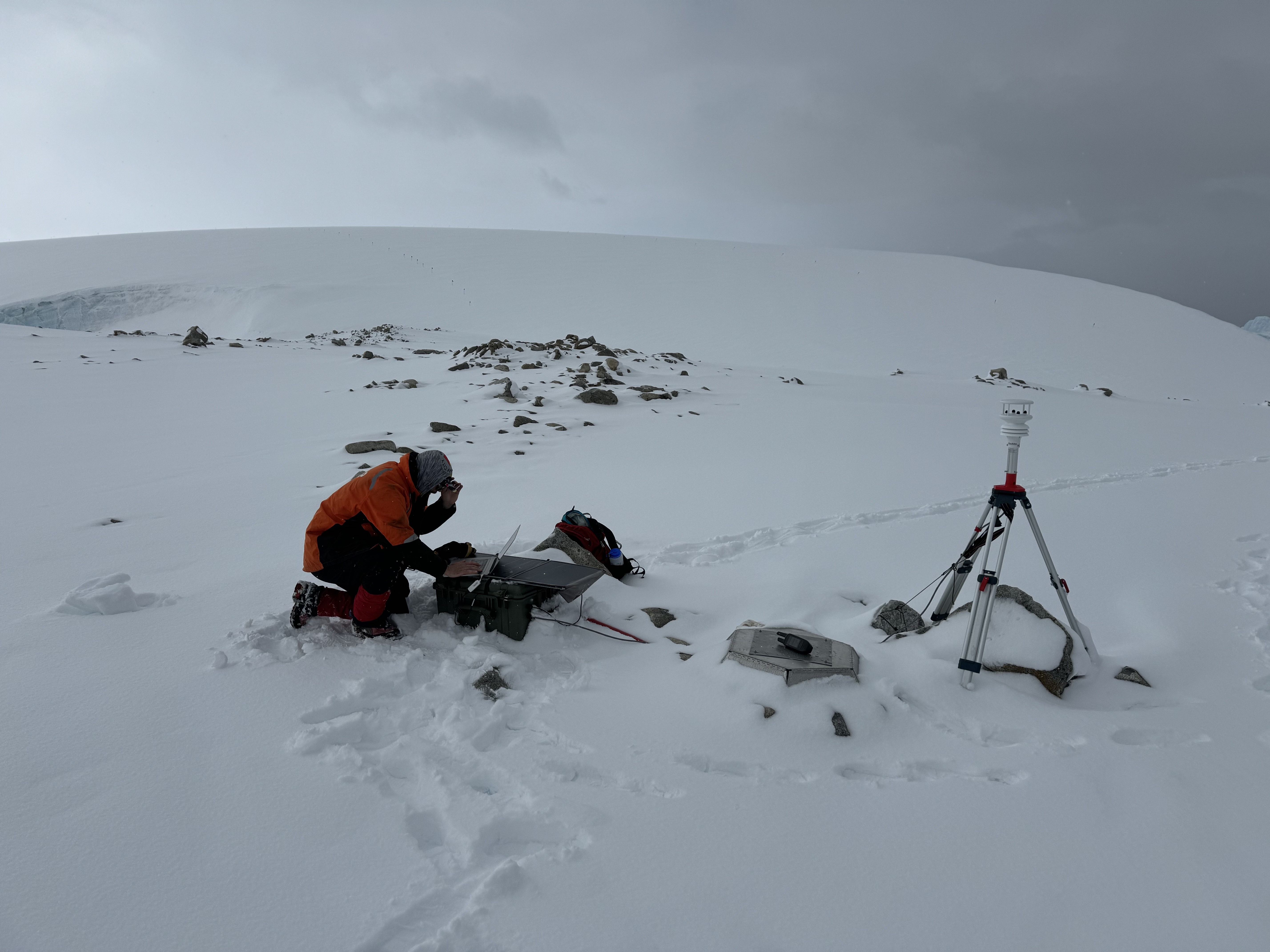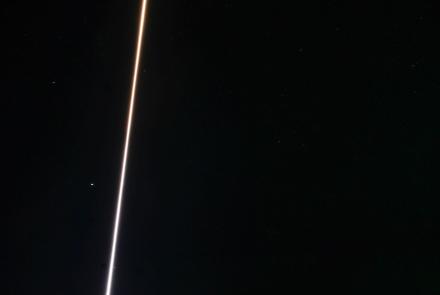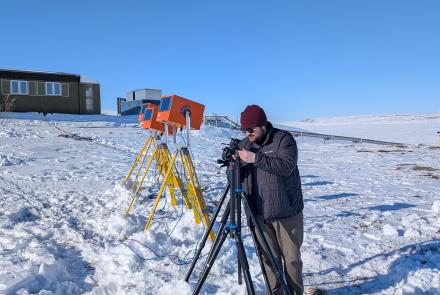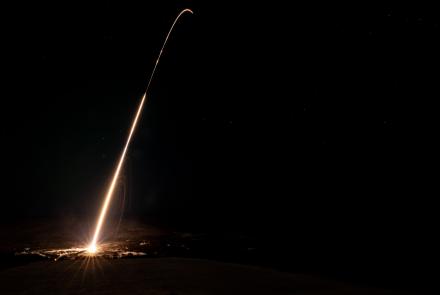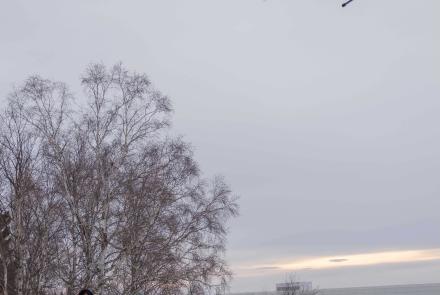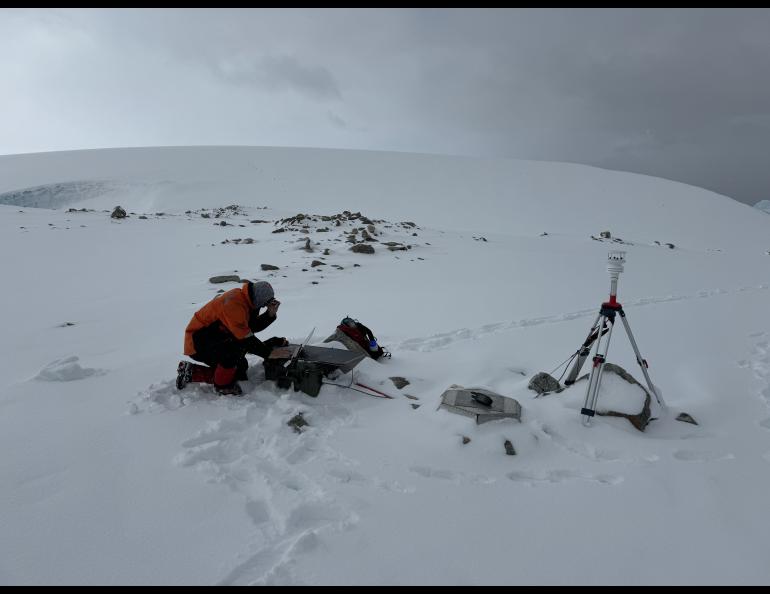
UAF receives funding to enhance nuclear proliferation detection
The University of Alaska Fairbanks has been named to a group of 12 universities tasked by the federal government with improving and expanding the nation’s detection of nuclear weapons proliferation.
The U.S. Department of Energy’s National Nuclear Security Administration has awarded two groups of universities a combined $50 million over five years for research related to the agency’s nuclear security and nonproliferation missions. The universities will partner with the Department of Energy’s national laboratories.
UAF is in a group of 12 universities led by Georgia Tech. A second group, of 15 universities, is led by the University of Tennessee, Knoxville.
UAF’s portion of the funding will come to the Geophysical Institute and will fully fund two graduate student researchers for five years, one working with the Alaska Earthquake Center and the other with the Wilson Alaska Technical Center.
The Wilson Alaska Technical Center operates nearly two dozen infrasound and seismic arrays worldwide that provide data used for monitoring nuclear proliferation, volcanic eruptions and earthquakes. It supports the U.S. Department of Defense’s nuclear proliferation monitoring and compliance with the Comprehensive Test Ban Treaty.
UAF’s work will focus on improving detection of smaller activities that could be associated with the spread of nuclear weapons.
“Traditionally in seismology and infrasound we’ve focused on large explosions,” said David Fee, the Wilson Alaska Technical Center’s director. “If North Korea sets off a nuclear explosion, we record the seismic and infrasound signals.’
“In this new group, our research will be looking to create methods to detect some of the other activities associated with nuclear proliferation such as mining or running a reactor,” he said. “We want to be able to detect geophysical signals of nuclear proliferation activity that aren’t big explosions.”
Advanced seismic monitoring can distinguish between an earthquake and a nuclear explosion based on the seismic waveforms and the nature of the ground shaking.
Infrasound refers to sound waves with frequencies generally below the lower limit of human hearing. Nuclear explosions generate infrasound directly from the explosive event, resulting in a sharp, clear signal onset that is stronger and has a higher amplitude compared to most natural events.
Signals from smaller events will be difficult to detect because they are weaker, meaning sensors using current technology would need to be closer to the source. Some of those may be in nations hostile to the United States, making it necessary to have a means of detecting those lesser events from a great distance.
The goal for the funding coming to the Wilson Alaska Technical Center and the Alaska Earthquake Center is to improve technology for working at closer range and to detect smaller events, including low-yield nuclear detonations, from afar.
“We are always trying to push the boundaries of both,” said Michael West, director of the Alaska Earthquake Center. “We want to be able to detect and assess smaller events of all types. And we want to be able to do that from as far away as we can, because we will never have instruments everywhere, especially in conflict and denied areas.”
“It is absolutely the goal of this project to push down our current detection limits,” he said.
Having two graduate students fully funded for five years and assigned to the task of detecting smaller nuclear proliferation events, including low-yield explosions, is a significant advance, Fee said. And it fits with the federal government’s goal of training young scientists for work at the national laboratories and related agencies.
“That often doesn't happen,” he said. “We usually have multiple grants that will fund a student for their Ph.D, so this provides end-to-end funding for a research project for a student to obtain a Ph.D.”
There’s also the benefit of working with other universities and with the Energy Department’s national laboratories.
“One of the exciting things is that we get to take our science and the subjects that we're familiar with and present it to people in different but related fields,” Fee said. “One of the benefits of these big consortiums is you get people from many disciplines in different locations working together.”
The Wilson Alaska Technical Center and Alaska Earthquake Center perform nuclear proliferation monitoring work in part through the Defense Department-designated University Affiliated Research Center at the Geophysical Institute. UAF is one of 15 UARCs nationwide and the only one charged with the geophysical detection of nuclear proliferation.
Funding is through the National Nuclear Security Administration’s Office of Defense Nuclear Nonproliferation.
• David Fee, Wilson Alaska Technical Center, 907-474-7564, dfee1@alaska.edu
• Michael West, Alaska Earthquake Center, 907-474-6977, mewest@alaska.edu
• Rod Boyce, University of Alaska Fairbanks Geophysical Institute, 907-474-7185, rcboyce@alaska.edu

